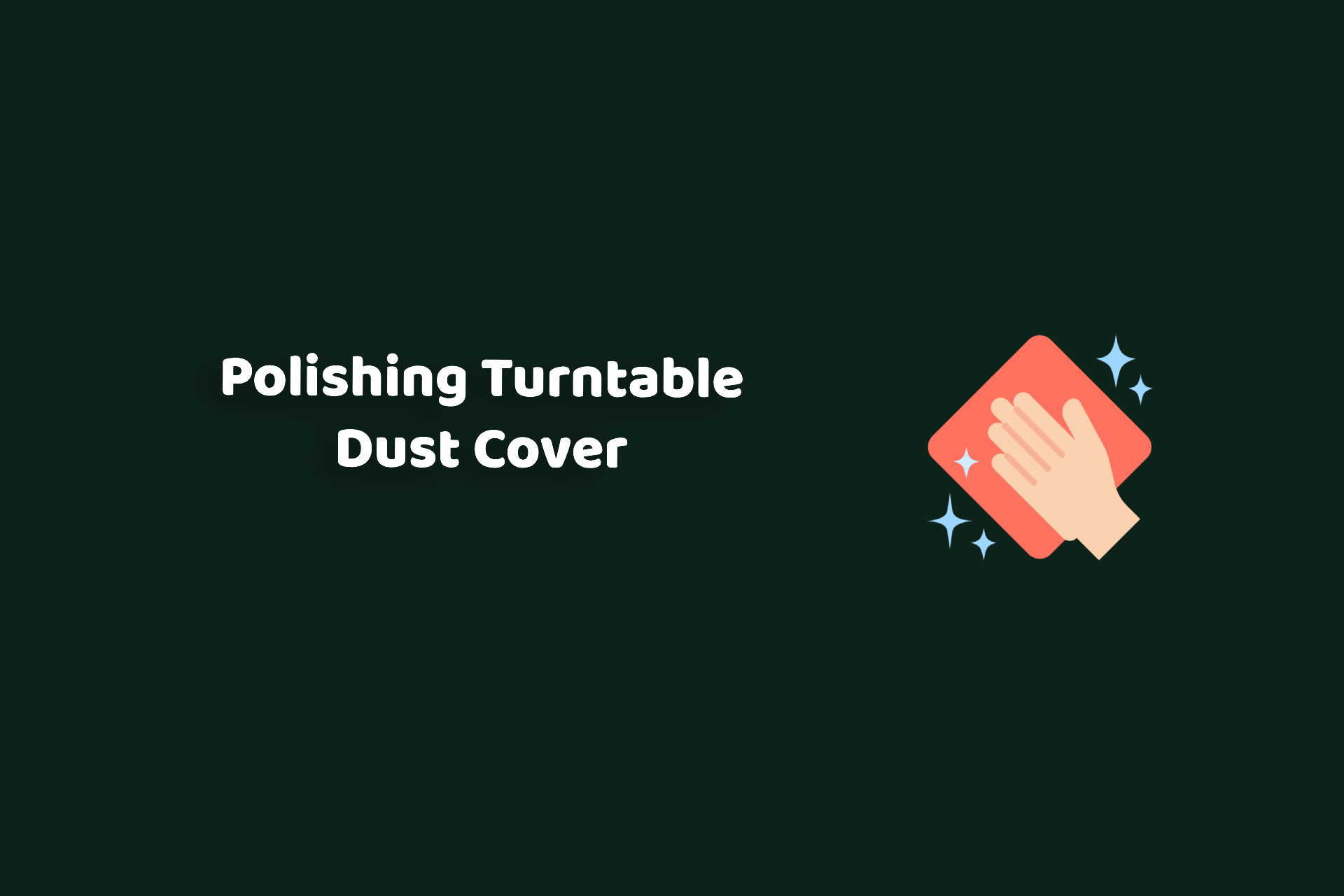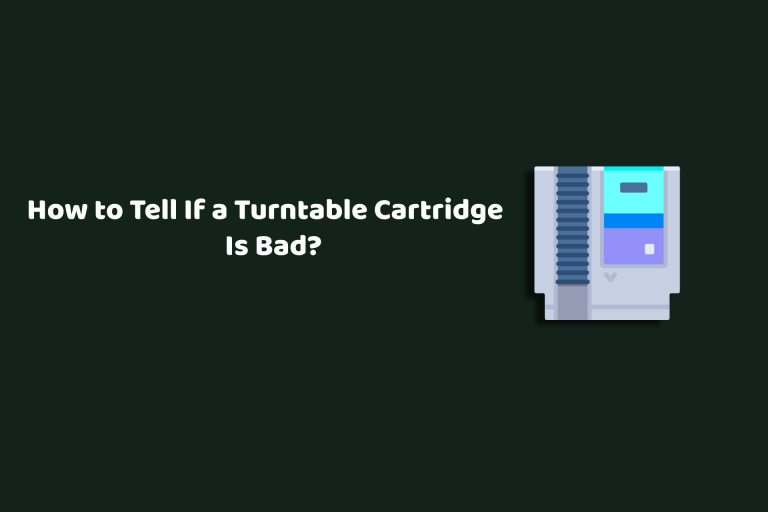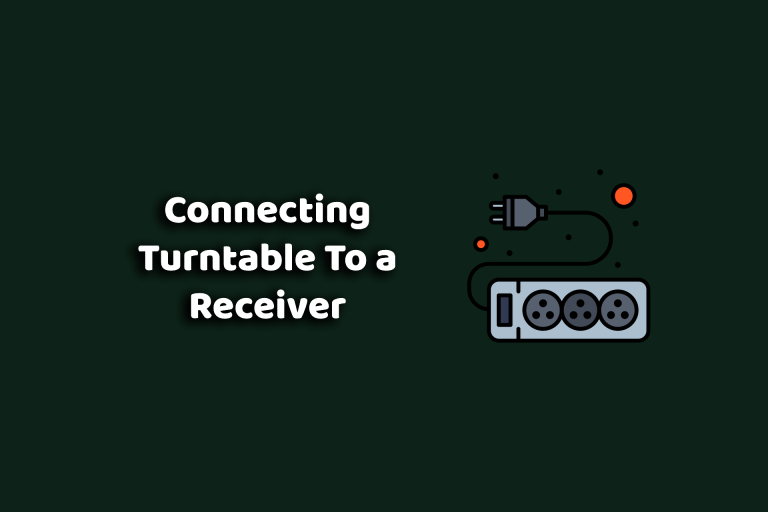How to Polish a Turntable Dust Cover?
Picture this: You’re about to play back your favourite vinyl record, but when you look at your turntable, all you see are those marks on your cover.
I know the feeling- scratches, haze, and that dull finish can really detract from the sleek, stylish look you want for your setup.
But don’t worry; I’m here to help you restore that shine and make your turntable dust cover look as good as new.
I will share a few simple yet effective tips that will turn your dull turntable into a crystal-clear masterpiece. And the best part? You can do it all with some basic tools and a bit of elbow grease.
Let’s get started!
What are the Common Issues with Dust Cover?
Here are some common issues I discovered with turntable dust cover:
Scratches and Haze
One of the first things you’ll probably notice on your turntable dust cover are those annoying scratches and the hazy look that seems to appear out of nowhere.
I used to wonder why my dust cover looked so old, even though my turntable was relatively new. It turns out that even gentle cleaning can gradually leave marks over time.
Static Electricity
Have you ever picked up the dust cover and noticed it seems to attract dust like a magnet?
Yes, that is the static electricity at work. It happens especially with certain materials like acrylic, and it can discard all your dust-protection efforts.
Hinge Problems
I once had a dust cover that just refused to stay up —highly frustrating when you’re trying to swap out records.
If your cover keeps slamming shut, it might be time to check the hinges. Sometimes, all it takes is a few shims or, in some cases, a complete hinge replacement.
Vibration and Feedback
When you’re in the zone, listening to music, you last want vibrations or feedback.
I learned the hard way that playing records with the dust cover down can sometimes mess with the sound quality. The cover can cause vibrations that make the music sound off, which can totally ruin the music vibe.
Fit and Clearance Issues
If you have modified your turntable, like changing the weights, you might notice that the dust cover no longer fits quite right.
This happened to me when I was experimenting with my setup, and I ended up scratching the cover when I closed it.
It’s a reminder to always check the fit before making changes.
Materials Needed to Polish a Turntable Dust Cover?
Here’s a complete list of materials you need to polish your turntable dust cover:
Basic Cleaning Supplies
It is crucial to start with a clean surface before starting the polishing process. Dust and grime can make scratches look worse and may even cause more damage if not removed properly.
Using the right cleaning supplies will help you prep your dust cover for polishing and ensure a smooth, scratch-free finish.
Microfiber cloths
These cloths are essential for cleaning without scratching. They are gentle on the surface and perfect for removing dust and grime from your dust cover.
Be sure to avoid using paper towels or any abrasive materials that could cause scratches.
Mild cleaning solution or dish soap
A simple mix of water and a few drops of dish soap can effectively clean your dust cover. This mild solution helps remove surface dirt without damaging the plastic.
Always make sure to rinse off any soap residue thoroughly to prevent streaking.
Water
Water is used with the mild cleaning solution and also to rinse off any cleaning agents.
Make sure to use distilled or filtered water to avoid mineral deposits, especially if you live in an area with hard water.
Polishing Agents
Once your dust cover is clean, you should use the right polishing agents to tackle any scratches or haze. These products are mainly used to restore clarity and shine to plastic surfaces, making your dust cover look brand new.
- Plastic Polish
Plastic polishes like Novus and Meguiar’s help remove fine scratches and revive clarity.
They come in different formulations for various levels of abrasion, making them ideal for polishing your dust cover.
- Toothpaste for Light Abrasions
Non-gel toothpaste can be surprisingly effective for light scratches. Its mild abrasiveness helps buff out minor imperfections.
Apply a small quantity of toothpaste to a microfiber cloth and gently rub it in circular motions.
- Car Wax for Additional Shine
After polishing, applying a layer of car wax can protect the surface and enhance its shine.
This adds a protective coating that keeps your dust cover looking great and guards against future scratches.
Optional Tools
For those deeper scratches or for getting that perfect finishing, some additional tools can make your dust cover look its best.
- Sandpaper
Wet sandpaper can be used for deeper scratches. Start with a finer grit like 800, and progress to 1500 and 2000 for a smoother finish.
Be gentle and keep the sandpaper wet to prevent any extra scratches.
- Dual-Action Polisher
A dual-action polisher can make the job easier, especially if you’re dealing with multiple covers.
It helps get a professional-level finish with minimal effort, reducing the time spent on manual polishing.
- Buffing Pads
Buffing pads are used with a dual-action polisher or by hand to apply polish and wax. These pads help distribute the polish evenly and reduce the risk of adding new scratches.
Ensure the pads are clean and suited for the type of polish you are using.
Step-by-Step Guide to Cleaning and Polishing Turntable Dust Cover
Here is a detailed step-by-step guide to cleaning and polishing your turntable dust cover:
Step 1: Remove and Prepare the Dust Cover
First, carefully take the dust cover off your turntable. Most covers lift right off, but if you’re unsure, double-check your manual.
I like to lay it on a soft towel to prevent scratches while working.
Step 2: Initial Cleaning
Mix a bit of dish soap with water- just enough to make a gentle cleaning solution. Dip a microfiber cloth into the mix and gently wipe the dust cover.
Make sure to clean both inside and out. This is all about getting rid of that surface dust and grime. I always follow up with a rinse from another damp cloth to make sure no soap is left behind.
Step 3: Dry Thoroughly
Grab a clean microfiber cloth again and dry the cover completely. Leaving water to dry on its own can cause spots, so it’s worth the extra effort.
I always make sure everything is dry before moving to the next step.
Step 4: Light Scratch Removal with Toothpaste
Here’s a little trick I learned: Non-gel toothpaste works wonders for light scratches. Just put a dab on a clean cloth and rub it into the scratches in a circular motion.
The mild abrasiveness of the toothpaste helps smooth things out. Wipe off any leftover paste with a damp cloth, then dry it again.
Step 5: Sanding for Deeper Scratches
Now if you’re wondering what to do for those deeper scratches, wet sandpaper is what you need.
Start by gently sanding the surface with 1000-grit sandpaper, focusing on removing the scratches without damaging the cover. Use circular motions to avoid creating new scratch patterns.
After the initial sanding, switch to 2000-grit sandpaper to refine the surface, enhance its smoothness and prepare it for polishing.
Note: Always sand in one direction (north-south or east-west) to ensure uniformity and prevent additional scratches.
Step 6: Apply Plastic Polish
Get some plastic polish like Novus or Meguiar’s. Apply a small amount to a cloth and buff the surface using small, circular motions.
Work in sections and be gentle- it’s all about bringing back that clarity to your turntable dust cover.
Step 7: Final Buffing with Car Wax
To complete the process, apply a thin layer of car wax. This adds a protective coat and makes the cover gleam.
I use a buffing pad or another clean cloth to spread the wax evenly, and it gives such a satisfying shine.
Step 8: Reattach the Dust Cover
Once you’re happy with how your dust cover looks, attach that cover back to your turntable.
Now your turntable should look as good as the day you brought it home.
Additional Tips for Turntable Dust Cover Maintenance
Here are some extra tips for keeping your turntable dust cover in top shape. These are the little tricks I’ve picked up over time that aren’t always talked about but can be effective:
- Placing objects on top of the dust cover can cause scratches or even cracks. Keep the area clean to maintain its condition.
- Dust from nearby surfaces can easily settle on your turntable, so make sure to keep the surrounding area clean to minimize dust buildup.
- A soft brush can help remove dust from those hard-to-reach spots without scratching the surface. It’s perfect for cleaning around hinges and edges.
- Sometimes, despite your best efforts, a cover might be beyond repair. Consider buying a new cover to protect your turntable and records.
- Check your dust cover periodically for signs of wear, such as cracks or missing hinges, and address any issues promptly to prevent further damage.
Common Mistakes to Avoid While Cleaning Turntable Dust Cover
Here’s a rundown of some common mistakes people make while cleaning their turntable dust cover. These tips will help you avoid the pitfalls that I’ve learned through trial and error:
Applying Too Much Pressure
When you’re trying to buff out a scratch, it might feel like more pressure equals better results.
However, pressing too hard can cause more harm than good, potentially cracking the cover or creating more scratches.
Skipping the Rinse Step
After using soap or cleaning products, it is crucial to rinse the dust cover thoroughly. Leaving any residue can lead to streaks or a cloudy appearance.
I always make sure to wipe down the cover with clean water to prevent this.
Using Harsh Chemicals
Avoid using harsh chemicals like window cleaners or alcohol-based solutions. These can react with plastic, leading to discolouration or further scratches.
Stick to mild solutions to keep your cover in good shape.
Keep Your Turntable Dust Cover Gleaming!
And there you have it. I hope these steps help you get your dust cover looking its best. It is a simple way to keep your turntable setup looking sharp and clear.
Regular maintenance enhances the look of your turntable dust cover and extends its lifespan by protecting it from dust and static.
So, what are you waiting for? Go ahead and give your dust cover the care it deserves.






